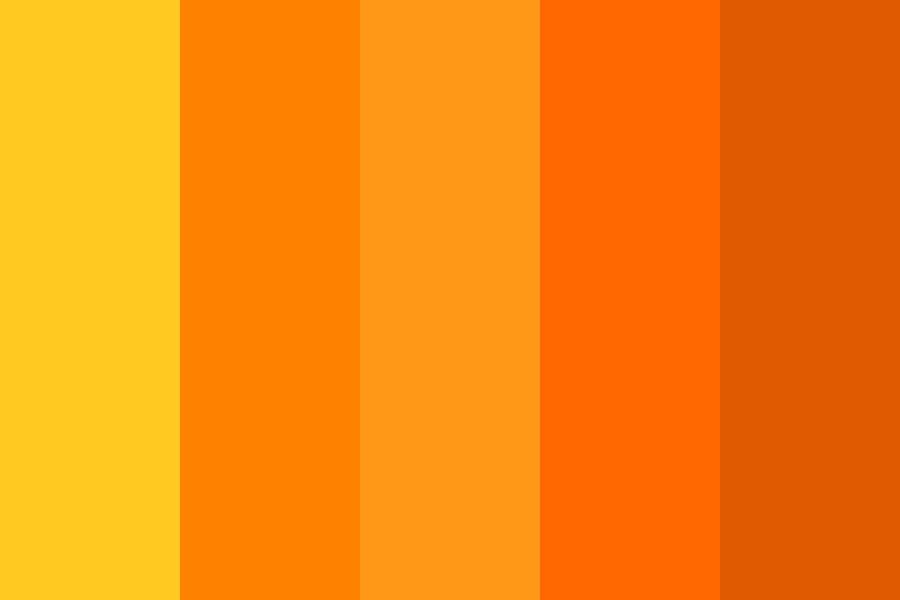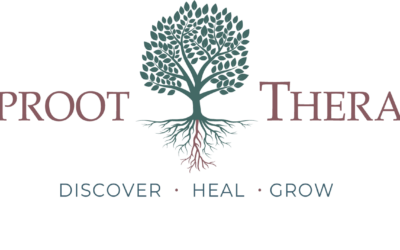
What Does Orange Mean in a Dream
Vibrant, energetic, and captivating, the color orange has long been associated with the fires of passion, the spark of creativity, and the alchemy of personal transformation. From the warm glow of a sunset to the bold brushstrokes of an abstract painting, orange hues seem to embody the very essence of vitality, enthusiasm, and the courage to embrace change.
In this comprehensive exploration, we will delve into the multifaceted nature of orange, examining its profound effects on our emotional states, its rich symbolic and archetypal meanings, and its transformative applications in the realms of psychology, artistic expression, and spiritual growth.
Our journey will begin with an investigation of the latest scientific research on how exposure to orange light influences brain activity, motivation, and creative thinking. We will then trace the threads of orange symbolism through various cultural and spiritual traditions, exploring its associations with concepts such as passion, sexuality, and the transformative power of the sacral chakra.
Finally, we will consider how these insights can inform therapeutic practice and personal growth strategies, offering practical guidance on harnessing the power of orange to ignite passion, unleash creativity, and catalyze personal transformation.
Whether you are a mental health professional seeking to expand your understanding of color psychology or an individual eager to tap into the transformative potential of color in your own journey of self-expression and growth, this in-depth guide to orange will provide a wealth of knowledge, inspiration, and practical tools for igniting the flames of passion and creativity within.
The Meaning of Orange in Dreams
In dream symbolism, orange is often associated with vitality, creativity, and emotional warmth. It blends the passion and energy of red with the intellect and illumination of yellow, making it a color of enthusiasm, transformation, and social connection. Dreaming of orange may indicate a period of renewal, an awakening of creative potential, or a deepening of emotional intimacy. It is linked to the sacral chakra, which governs sensuality, pleasure, and personal relationships. A bright and vibrant orange in a dream suggests confidence, spontaneity, and a willingness to embrace change, while a muted or dark orange could indicate suppressed emotions, fear of vulnerability, or a struggle with balancing desire and restraint. If orange appears in association with fire, it may symbolize purification and renewal, while an orange sunset might reflect the closing of a chapter and the transition into a new phase of life.
The Meaning of Orange in Emotional Transformation Therapy (ETT)
In Emotional Transformation Therapy (ETT), developed by Dr. Steven Vazquez, orange light is used to stimulate emotional expression, enhance vitality, and support the processing of deep-seated emotions. Orange is closely tied to the sacral chakra, which governs emotions, pleasure, and interpersonal connection. It is often applied in ETT to help individuals who struggle with emotional suppression, creative blocks, or difficulty accessing joy and passion.
Physiologically, exposure to orange light in ETT can activate the autonomic nervous system, creating a sense of warmth, comfort, and motivation. It can be particularly effective for those experiencing emotional numbness, stagnation, or a lack of motivation. However, because orange can also stir up unresolved emotional material, its application must be carefully calibrated to avoid overstimulation. Some individuals may initially feel resistance to orange light if they have suppressed emotions related to past experiences of rejection, intimacy issues, or personal expression. By carefully adjusting the intensity and exposure, ETT practitioners use orange light to facilitate emotional breakthroughs, rekindle enthusiasm, and restore a sense of vitality in clients.
The Neuroscience of Orange Light
To fully grasp the psychological impact of orange, it is essential to first understand how this color affects the brain and the nervous system at a physiological level. Recent advancements in neuroscience and color psychology have provided valuable insights into the complex ways in which different wavelengths of light can modulate neural activity, emotional states, and cognitive functions.
Research has shown that exposure to orange light has a significant impact on the ventral tegmental area (VTA) and its downstream projections in the mesocorticolimbic system, also known as the brain’s reward circuitry (Elliot et al., 2010). The VTA is a midbrain structure that plays a crucial role in motivation, pleasure, and the anticipation of rewarding stimuli, and its activation is mediated by the neurotransmitter dopamine (Berridge & Kringelbach, 2008).
Enhancing Motivation and Goal-Directed Behavior
Studies using functional magnetic resonance imaging (fMRI) have demonstrated that exposure to orange light increases activity in the VTA and its target regions, such as the nucleus accumbens, prefrontal cortex, and anterior cingulate cortex (Elliot et al., 2010). These regions form a network that is involved in the processing of rewarding stimuli, the generation of positive affect, and the initiation and maintenance of goal-directed behavior (Kringelbach & Berridge, 2009).
The increased activity in the mesocorticolimbic system induced by orange light has been linked to improvements in motivation, task engagement, and the willingness to exert effort in the pursuit of desired outcomes. For example, research has shown that exposure to orange light enhances performance on cognitive tasks that require sustained attention and mental effort, such as working memory and problem-solving tasks (Mehta & Zhu, 2009).
These findings suggest that orange light may be particularly beneficial for individuals who struggle with motivation, procrastination, or goal-setting. By optimizing the function of the brain’s reward circuitry and enhancing the salience of positive stimuli, orange light can help create a state of heightened engagement, enthusiasm, and drive, enabling individuals to overcome obstacles and persist in the face of challenges.
Stimulating Creativity and Divergent Thinking
In addition to its effects on motivation and goal-directed behavior, orange light has been shown to have a positive impact on creative thinking and artistic expression. Studies have found that exposure to orange light can increase the generation of novel and original ideas, as well as the flexibility and fluency of thought processes (Mehta & Zhu, 2009).
These creativity-enhancing effects of orange light may be mediated by its influence on the right hemisphere of the brain, which is associated with holistic, intuitive, and imaginative thinking styles (Martindale & Hines, 1975). Research using electroencephalography (EEG) has shown that orange light increases alpha wave activity in the right hemisphere, particularly in the temporal and parietal regions, which are involved in the processing of visual and spatial information (Bhattacharya & Petsche, 2005).
Furthermore, orange light has been found to modulate the activity of the default mode network (DMN), a set of brain regions that is active during rest and self-generated thought processes, such as daydreaming, mind-wandering, and creative ideation (Beaty et al., 2014). By altering the functional connectivity between the DMN and other brain networks involved in attention and cognitive control, orange light may facilitate a state of open awareness and spontaneous idea generation, conducive to creative insights and breakthroughs.
Evoking Passion and Emotional Intensity
At a deeper level, the activation of the mesocorticolimbic system by orange light may also have implications for the experience of passion, desire, and emotional intensity. The VTA and its projections to the limbic system, particularly the amygdala and the hippocampus, are involved in the processing and regulation of emotions, especially those related to reward, pleasure, and motivation (Kober et al., 2008).
Research has shown that exposure to orange light can increase subjective feelings of warmth, arousal, and excitement, as well as physiological indicators of emotional reactivity, such as skin conductance and heart rate (Valdez & Mehrabian, 1994). These findings suggest that orange light may have a stimulating effect on the limbic system, enhancing the intensity and vividness of emotional experiences, particularly those associated with passion, desire, and enthusiasm.
Moreover, the amygdala and the hippocampus are also involved in the formation and retrieval of emotionally salient memories, and their activation by orange light may contribute to the subjective experience of nostalgia, sentimentality, and the evocation of past feelings and experiences (Markowitsch & Staniloiu, 2011). This emotional resonance of orange light may be particularly relevant in the context of artistic expression and creative work, where the ability to tap into deep-seated emotions and memories can be a powerful source of inspiration and authenticity.
The Symbolism and Archetypes of Orange
Beyond its neurophysiological effects, orange carries a rich tapestry of symbolic and archetypal meanings that have shaped human culture and consciousness throughout history. From ancient myths and religious iconography to modern art and literature, orange has been imbued with a wide range of associations, reflecting its multifaceted nature and its power to evoke deep psychological and spiritual truths.
The Fire of Passion and the Alchemy of Desire
In many cultural traditions, orange is associated with the element of fire, and its symbolic meanings are often linked to the transformative power of heat, light, and energy. In Hindu mythology, orange is the color of Agni, the god of fire, who represents the vital spark of life, the purifying flame of sacrifice, and the alchemical process of transformation (Johari, 2000). In Buddhist iconography, orange is the color of the monk’s robes, symbolizing the renunciation of worldly desires and the cultivation of inner fire, or tapas, through spiritual practice and discipline (Khantipalo, 1986).
This association between orange and the fire of passion is also reflected in the Western tradition of alchemy, where orange is linked to the stage of rubedo, or reddening, which represents the final transformation of the prima materia into the philosopher’s stone, the ultimate goal of the alchemical opus (Fabricius, 1976). In this context, orange symbolizes the exaltation of desire, the purification of the soul through the fires of love, and the attainment of spiritual perfection through the union of opposites (Edinger, 1994).
The archetypal figure of the lover, as embodied in mythological characters such as Eros, Aphrodite, or Tristan and Isolde, also partakes of the orange symbolism of passion and desire. Often depicted with flaming red hair or surrounded by an orange aura, the lover represents the intensity and urgency of erotic love, the willingness to risk everything for the sake of union with the beloved, and the transformative power ofRetryJTcontinueEditdesire to dissolve the boundaries of the self and merge with the other (Moore, 1998).
For individuals seeking to cultivate a greater sense of passion, vitality, and emotional authenticity in their lives, connecting with the orange archetype of the lover and the alchemical fire of desire can be a powerful catalyst for personal growth and transformation. By learning to embrace and channel the intensity of their feelings, to take risks in the pursuit of their heart’s desires, and to let go of fear and inhibition in the expression of their creative and sexual energies, individuals can tap into a deep well of life force and inspiration that can fuel their journey of self-discovery and actualization.
The Sacral Chakra and the Flow of Creative Energy
In the tantric traditions of India and Tibet, orange is associated with the second primary chakra, or energy center, known as Svadhisthana, which is located in the lower abdomen and governs the flow of creative and sexual energies in the body (Johari, 2000). The sacral chakra is linked to the element of water, and its balanced functioning is essential for the healthy expression of emotions, desires, and creative impulses (Judith, 2004).
When the sacral chakra is blocked or imbalanced, individuals may experience feelings of emotional numbness, creative stagnation, sexual dysfunction, or a sense of disconnection from their bodies and their instinctual wisdom. Conversely, when the sacral chakra is open and harmoniously activated, individuals may feel a sense of fluidity, adaptability, and spontaneity in their emotional and creative lives, as well as a deep sense of pleasure, sensuality, and vitality in their physical experiences (Judith, 2004).
The orange color of the sacral chakra is often visualized as a glowing ball of energy, radiating warmth and vitality throughout the body and mind. In meditative practices designed to balance and stimulate the chakras, orange is used as a focal point for concentration and visualization, helping to draw awareness and energy to the lower abdomen and to release any blockages or tensions held in this area (Johari, 2000).
For individuals seeking to enhance their creativity, sensuality, and emotional fluidity, working with the orange energy of the sacral chakra can be a powerful tool for personal growth and transformation. By learning to tune into the subtle sensations and impulses arising from this energy center, to trust and follow the natural flow of their creative and sexual energies, and to express themselves authentically and spontaneously in their relationships and artistic pursuits, individuals can tap into a limitless source of inspiration, joy, and vitality that can enrich every aspect of their lives.
The Trickster and the Liberation of Spontaneity
In many mythological and folkloric traditions, orange is also associated with the figure of the trickster, a mischievous and unpredictable character who challenges social norms, subverts established hierarchies, and liberates the creative and disruptive energies of the unconscious (Hyde, 2010). Often depicted as a fox, coyote, or other orange-colored animal, the trickster represents the wild, untamed aspects of the psyche that resist domestication and conformity, and that seek to express themselves through humor, play, and spontaneous action (Radin, 1956).
The trickster archetype is closely linked to the Jungian concept of the shadow, the repressed or denied aspects of the self that are often considered socially unacceptable or morally reprehensible (Jung, 1959). By confronting and integrating the shadow through the playful and irreverent energy of the trickster, individuals can learn to embrace their own contradictions and imperfections, to let go of rigid self-concepts and limiting beliefs, and to express themselves more freely and authentically in the world (Zweig & Abrams, 1991).
The orange color of the trickster can also be seen as a symbol of the fire of transformation that burns away the dross of the ego and the conditioning of society, revealing the pure, spontaneous, and creative nature of the self. In many indigenous cultures, the trickster is seen as a sacred figure who mediates between the world of the gods and the world of humans, bringing the gifts of fire, language, and culture to the people, and reminding them of the importance of laughter, play, and the embrace of life’s paradoxes (Hyde, 2010).
For individuals seeking to break free from the constraints of social conditioning, to explore new possibilities for self-expression and creativity, and to cultivate a more spontaneous and authentic way of being in the world, connecting with the orange energy of the trickster can be a liberating and transformative experience. By learning to embrace the disruptive and playful aspects of their own psyche, to challenge their own assumptions and beliefs, and to take risks in the pursuit of their dreams and desires, individuals can tap into a deep well of creative power and resilience that can help them navigate the challenges and opportunities of life with greater flexibility, humor, and grace.
Therapeutic Applications of Orange
The insights gained from the neuroscience and symbolism of orange have important implications for therapeutic practice and personal growth strategies. By consciously working with the qualities and archetypes of orange, therapists and individuals can harness its transformative potential to enhance motivation, creativity, and emotional vitality.
Enhancing Motivation and Goal-Setting
Given its positive effects on the brain’s reward circuitry and its ability to increase the salience of positive stimuli, orange can be a valuable tool for boosting motivation and facilitating goal-directed behavior. Incorporating orange elements into the therapeutic environment, such as through the use of orange lighting, artwork, or decor, may help create an atmosphere conducive to enthusiasm, optimism, and goal-setting.
Additionally, therapists can guide clients through visualization exercises that evoke the energizing and motivating qualities of orange, such as imagining a brilliant orange sun radiating its warmth and vitality into the body or picturing oneself surrounded by a vibrant orange aura that fills them with confidence, courage, and determination. Such interventions can be particularly helpful for individuals struggling with procrastination, apathy, or a lack of direction in their lives.
Moreover, the use of orange in goal-setting contexts can be enhanced by drawing on its archetypal associations with the fire of transformation and the alchemy of desire. For example, clients can be encouraged to visualize their goals and aspirations as glowing orange embers that ignite the flames of passion and purpose within them or to imagine themselves as the hero who boldly ventures forth into the unknown, guided by the orange light of their inner vision and the fire of their unquenchable spirit.
Stimulating Creativity and Artistic Expression
The creativity-enhancing and right-hemisphere-stimulating effects of orange light make it a useful tool for promoting artistic expression, divergent thinking, and creative problem-solving. Exposure to orange light, either through natural sunlight or artificial light therapy, can help individuals overcome creative blocks, generate novel ideas, and access the intuitive and imaginative aspects of their minds.
In addition to its direct physiological effects, orange can also be used symbolically to evoke the qualities of spontaneity, playfulness, and creative flow. Therapists can guide clients through expressive arts activities that involve working with orange materials, such as paints, clay, or fabrics, and encourage them to let go of self-judgment and perfectionism in favor of a more intuitive and exploratory approach to creation.
The archetypal associations of orange with the sacral chakra and the trickster can also be harnessed to stimulate creativity and self-expression. Clients can be invited to connect with the fluid, sensual, and spontaneous energies of the sacral chakra through movement, sound, or visualization practices, or to channel the disruptive and irreverent spirit of the trickster through improvisational theater, comedy, or other forms of playful and subversive art.
Evoking Passion and Emotional Vitality
The intensity-enhancing and emotion-evoking effects of orange light make it a powerful tool for promoting emotional vitality, passion, and authenticity. Therapists can create an orange-enriched environment in the therapy room to help clients access and express the full range of their feelings, from joy and excitement to anger and grief.
Guided visualizations that involve imagining oneself bathed in a warm orange glow of emotional energy or engaging in a dialogue with an inner figure of passion and desire can help clients connect with the fire of their own hearts and the depth of their authentic selves. Journaling exercises that prompt clients to explore the role of passion and intensity in their lives, or to reflect on the symbolic meanings of orange in their own personal narratives, can also facilitate greater emotional awareness and self-understanding.
The alchemical symbolism of orange as a stage of spiritual transformation and the purification of desire can also be used to support clients in their own process of emotional healing and growth. By engaging in practices that stimulate the inner fire of the soul, such as meditation, chanting, or ritual, clients can learn to transmute the lead of their repressed or stagnant emotions into the gold of their fully embodied and expressed selves.
In conclusion, the color orange emerges as a dynamic and multifaceted force in the realm of psychology, with profound effects on motivation, creativity, and emotional vitality. From its ability to enhance goal-directed behavior and divergent thinking to its capacity to evoke passion and authenticity, orange offers a wide range of therapeutic applications and transformative potentials.
By understanding the neuroscience of orange light and its impact on brain function, as well as the rich symbolic and archetypal meanings of orange across cultures and traditions, therapists and individuals can consciously harness the power of this fiery hue to support personal growth, self-expression, and spiritual transformation.
Whether through the use of orange-enriched environments, guided visualizations, or expressive arts practices that draw on orange’s transformative symbolism, the integration of orange into therapeutic and self-development contexts can help individuals ignite the flames of their own creativity, passion, and vitality, and embrace the fullness of their authentic selves.
As we continue to explore the fascinating world of color psychology and its applications, let us remember the energizing lessons of orange: that within each of us lies a brilliant sun of motivation, a fluid well of creative energy, and a fiery spark of passion and desire waiting to be ignited. May we all find the courage and inspiration to fan the flames of our own inner fire, to dance with the ever-changing rhythms of life, and to shine our unique colors brightly in the world.
Key Takeaways
- Orange light stimulates the ventral tegmental area (VTA) and the brain’s reward circuitry, enhancing motivation, goal-directed behavior, and the salience of positive stimuli.
- Orange is associated with the symbolism of fire, passion, and the alchemy of desire, as reflected in archetypes such as Agni, the lover, and the stages of the alchemical opus.
- The sacral chakra, associated with the color orange, governs the flow of creative and sexual energies in the body and is essential for emotional fluidity, sensuality, and vitality.
- The trickster archetype, often depicted in orange hues, represents the liberation of spontaneity, the embrace of paradox, and the transformative power of play and humor.
- Therapeutic applications of orange include enhancing motivation and goal-setting, stimulating creativity and artistic expression, and evoking passion and emotional authenticity.
Color Psychology




0 Comments